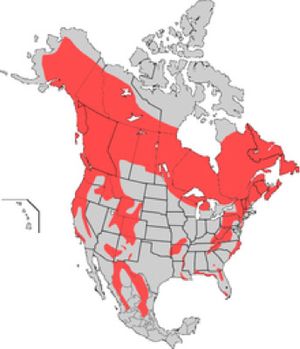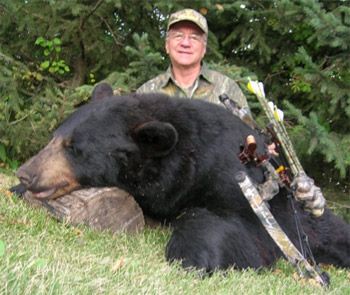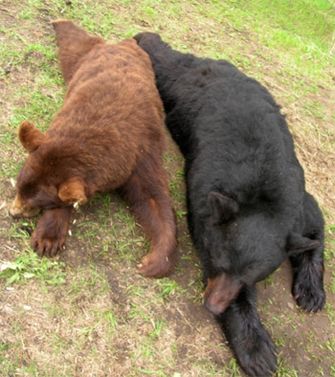24. Black Bear---Manitoba, Saskatchewan

For various reasons many believe that black bears are an endangered species. Not
true. In fact, black bear numbers have increased rather dramatically in the past
20 years. In West Virginia the black bear has made a dramatic comeback, probably
for two reasons. First, the general public has come to understand that we do not
need to shoot every bear seen as they are not a major threat to our safety or to
domestic animals. The old saying, "the only good bear is a dead bear" has fortunately
passed. The second reason for the comeback is because the wildlife agency delayed
the hunting season in December to a time when most females are already in hibernation
(females tend to hibernate before males). This change allowed more females to survive
the hunting season and thus, give birth to cubs (which takes place in mid-January).
The impact of these changes have been dramatic. In the 1970’s, the West Virginia
legal hunting harvest was less than 100 per year, but via sound management, hunter
harvest now averages 2,500 per year. Although black bears have a reputation for being
meat eaters, probably 70 percent of their diet is vegetarian. Grasses, berries, buds,
roots, and insects are primary items eaten, but raiding farmers corn and oats fields
sometimes get them in trouble.
The key to a healthy bear population is the allowance of hunting that keeps bear
numbers below levels where they negatively interact with people, and still allows
populations to be healthy. Unfortunately in some states animal rights groups have
used political pressure to stop bear hunting, and bear-human encounters have escalated,
leading to the killing of "problem" bears. Loss of hunting means no revenues to manage
bears, and the need to remove problem bears. No winners here and the bear suffers.
HUNT DESCRIPTION

The bear mount was a bear harvested in Manitoba. Hanging with this bear are hides
from two black bears. The one on the right is a chocolate-phase colored black bear,
while the one on the left is the normal black color.(for comparison below is a photo
of both color phases taken by bowhunters in Manitoba).
Both animals whose hides hang here in the Westvaco Natural Resource Center came
from the same area in Saskatchewan. In the eastern United States almost all bears
are black in color. In the Rocky Mountains of the west, most black bears are brown
or chocolate in color. Some scientists have speculated that the coloration has something
to do with heat reflection during the hot summer. However, this would not explain
the fact that in parts of Alberta and Saskatchewan as many as 40% of all bears are
brown or chocolate in color.

One further note of interest. If you spread the bottom portion of the chocolate robe
apart (I know, we ask you to not touch the mounts, but in this case, please do),
you can see the true chocolate color of the bear. This hide has been here since 2004
and the sun has bleached it to a blond color. That doesn’t happen on live bears,
but it did here. The bear’s original chocolate color is visible where the sun has
not bleached the hide.
